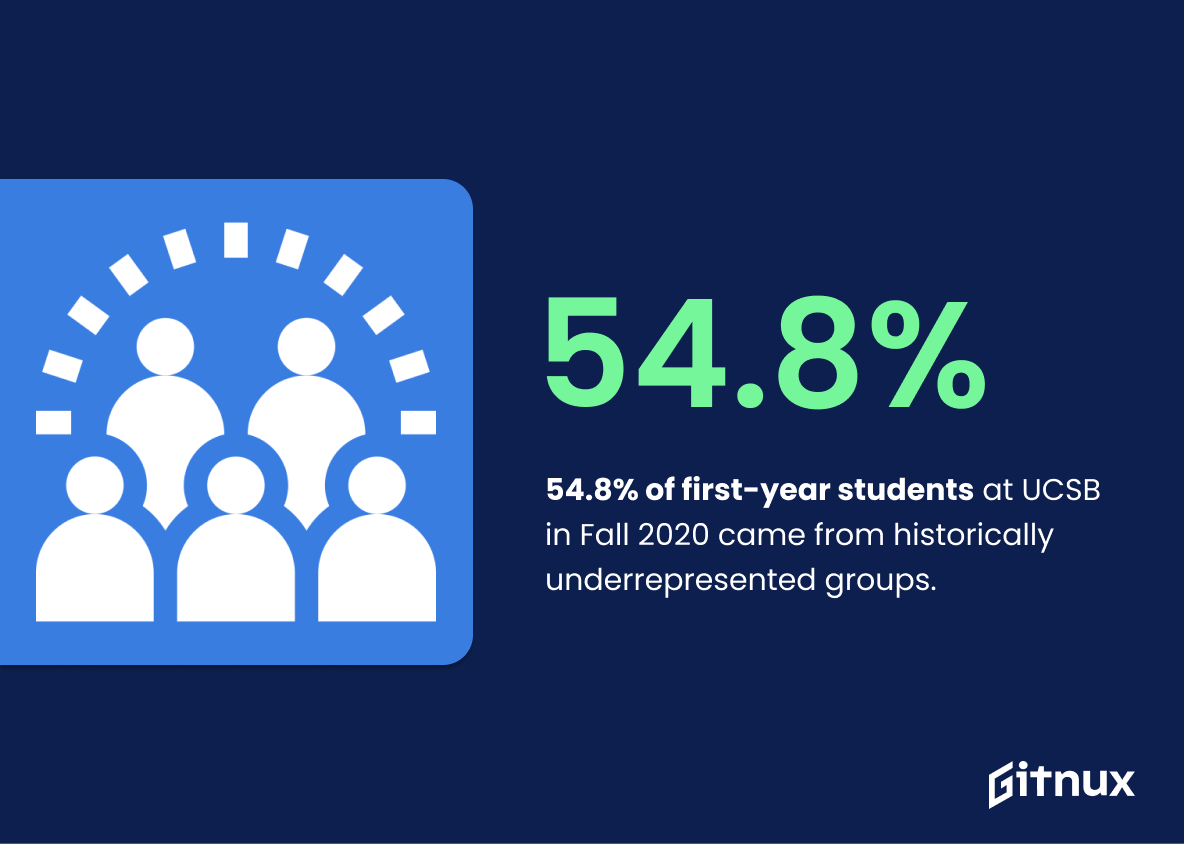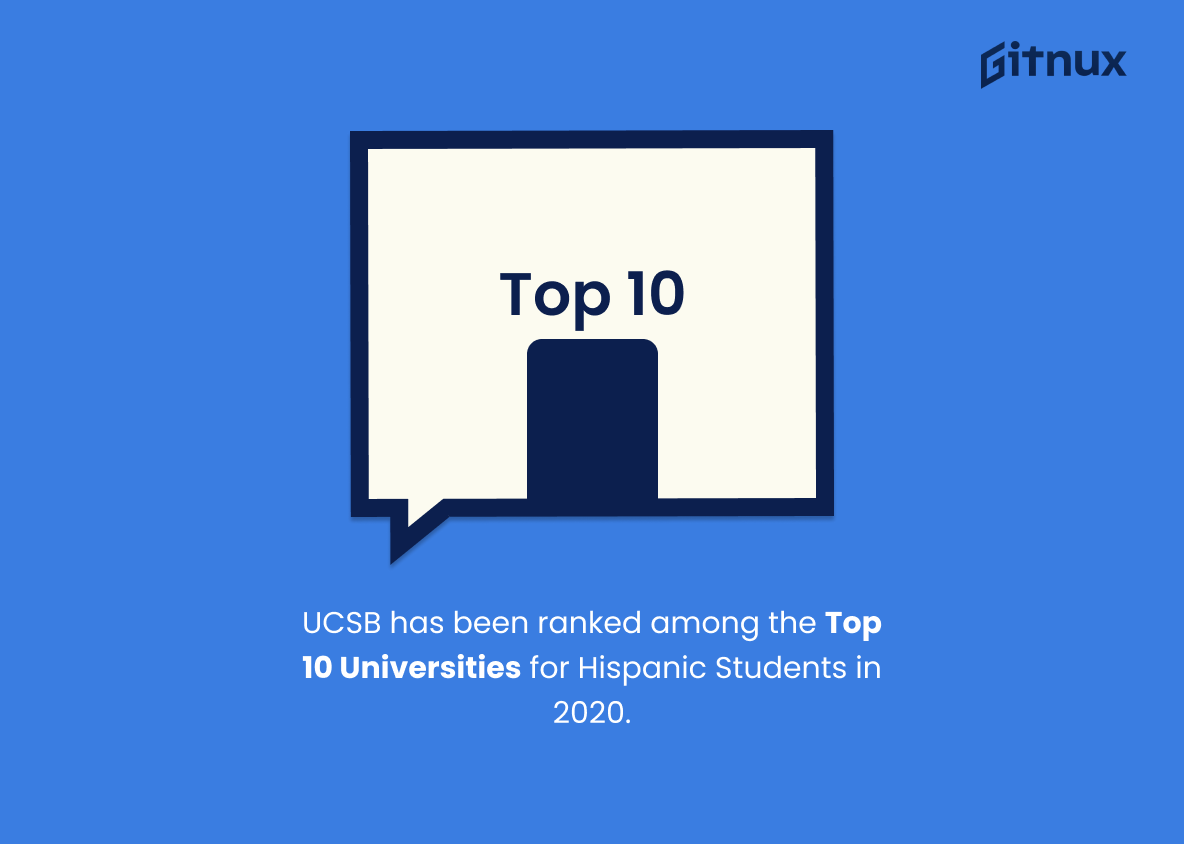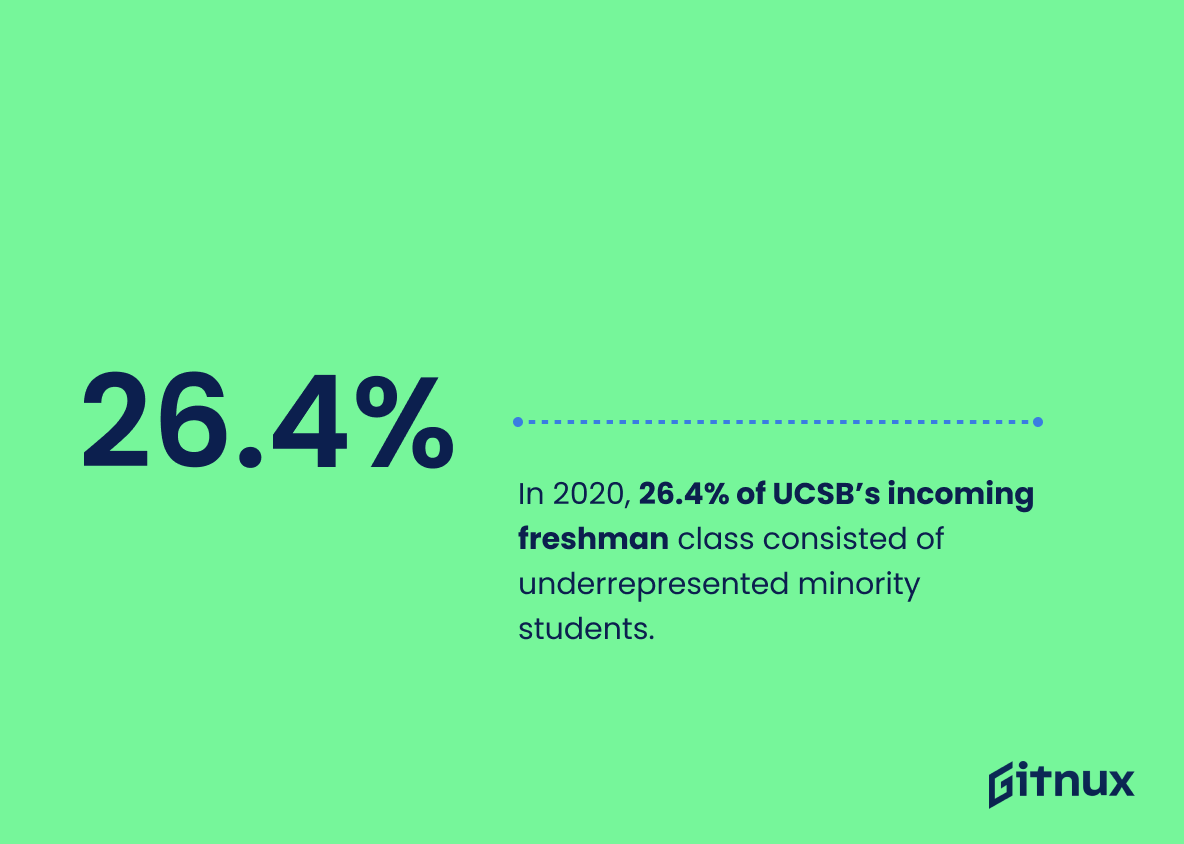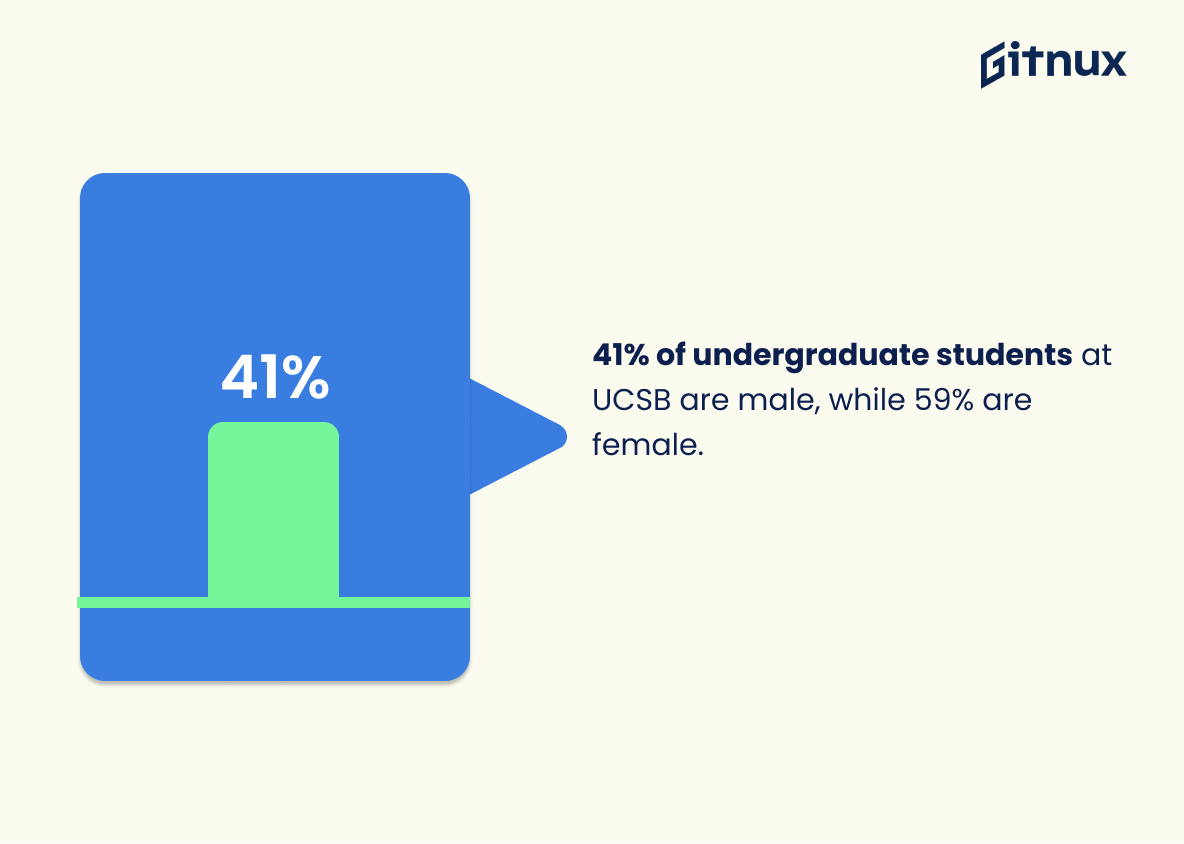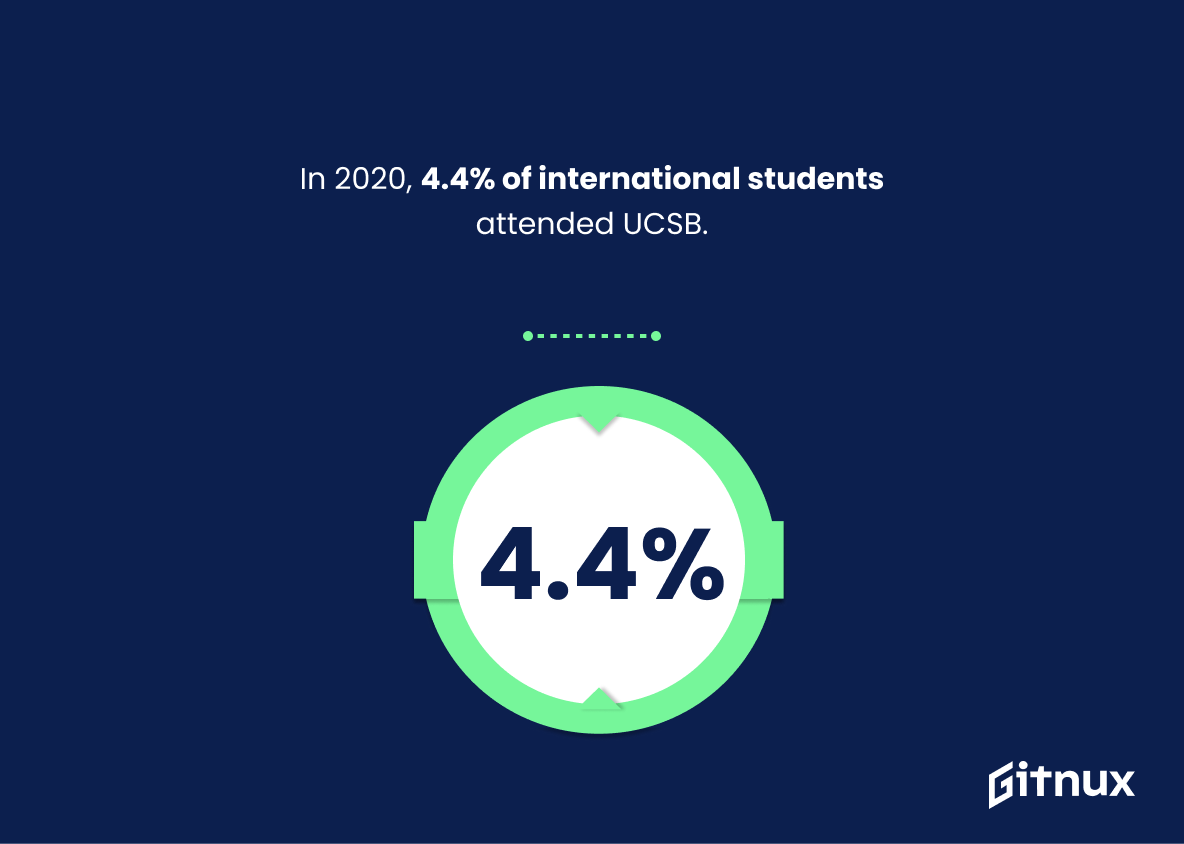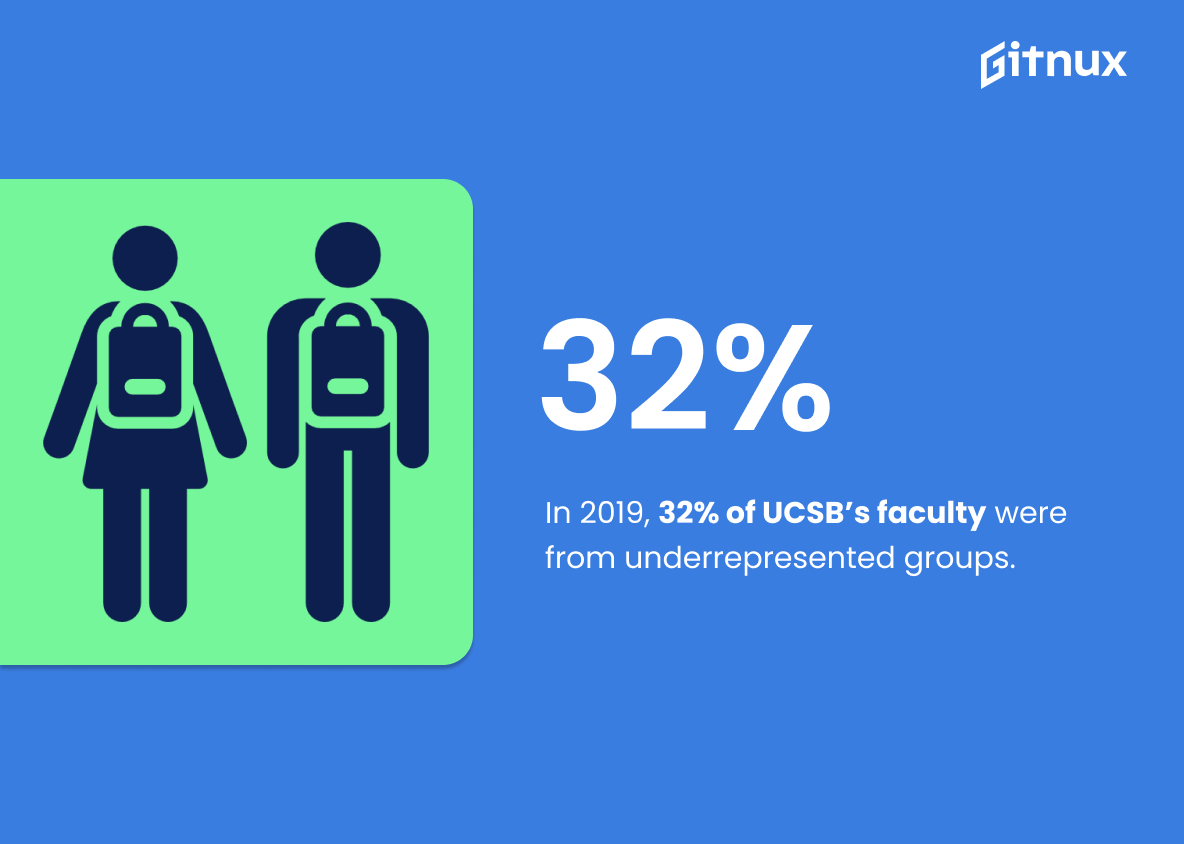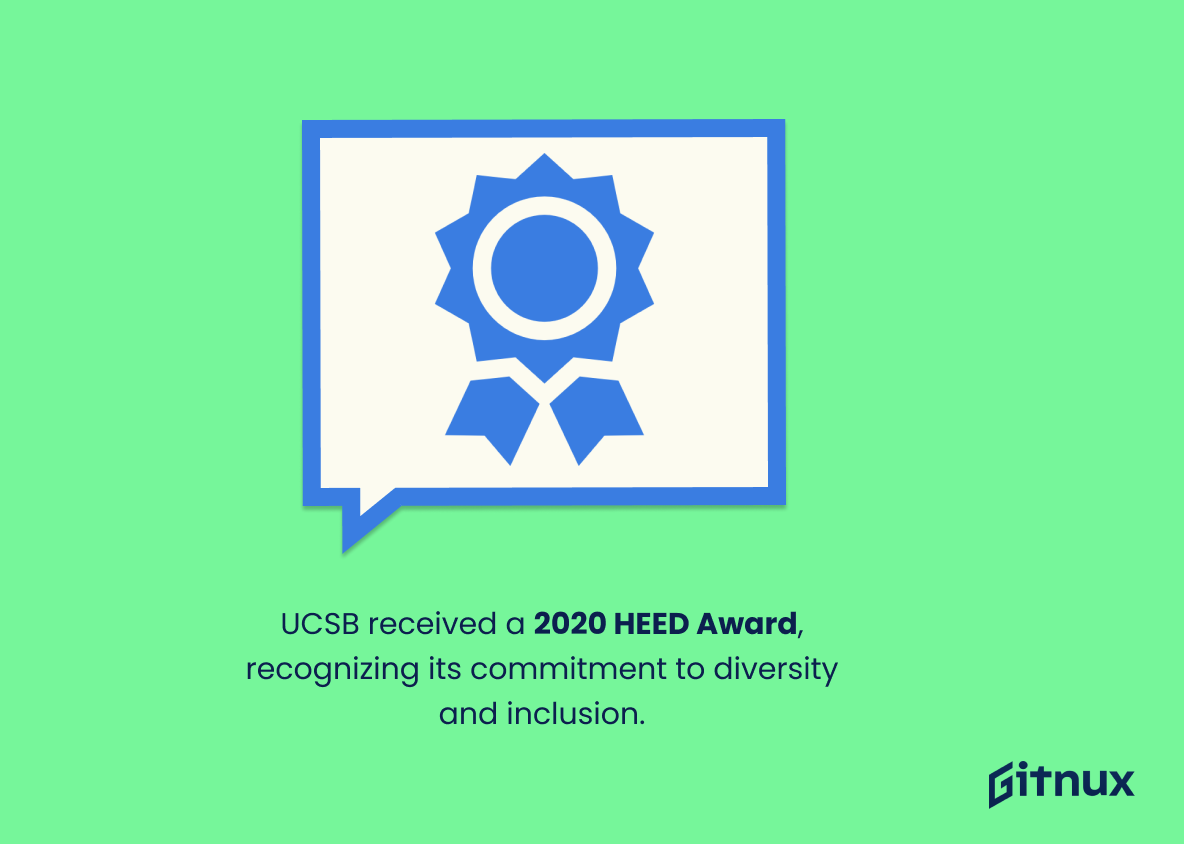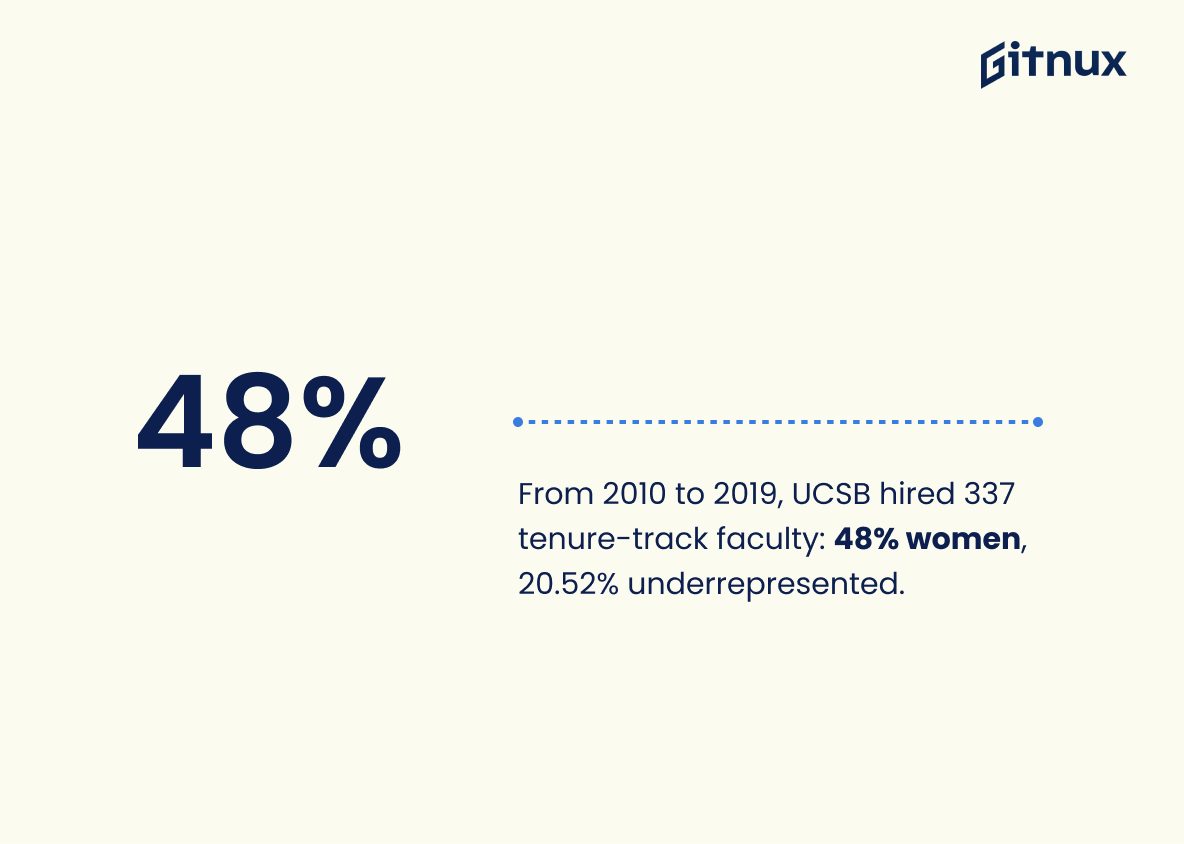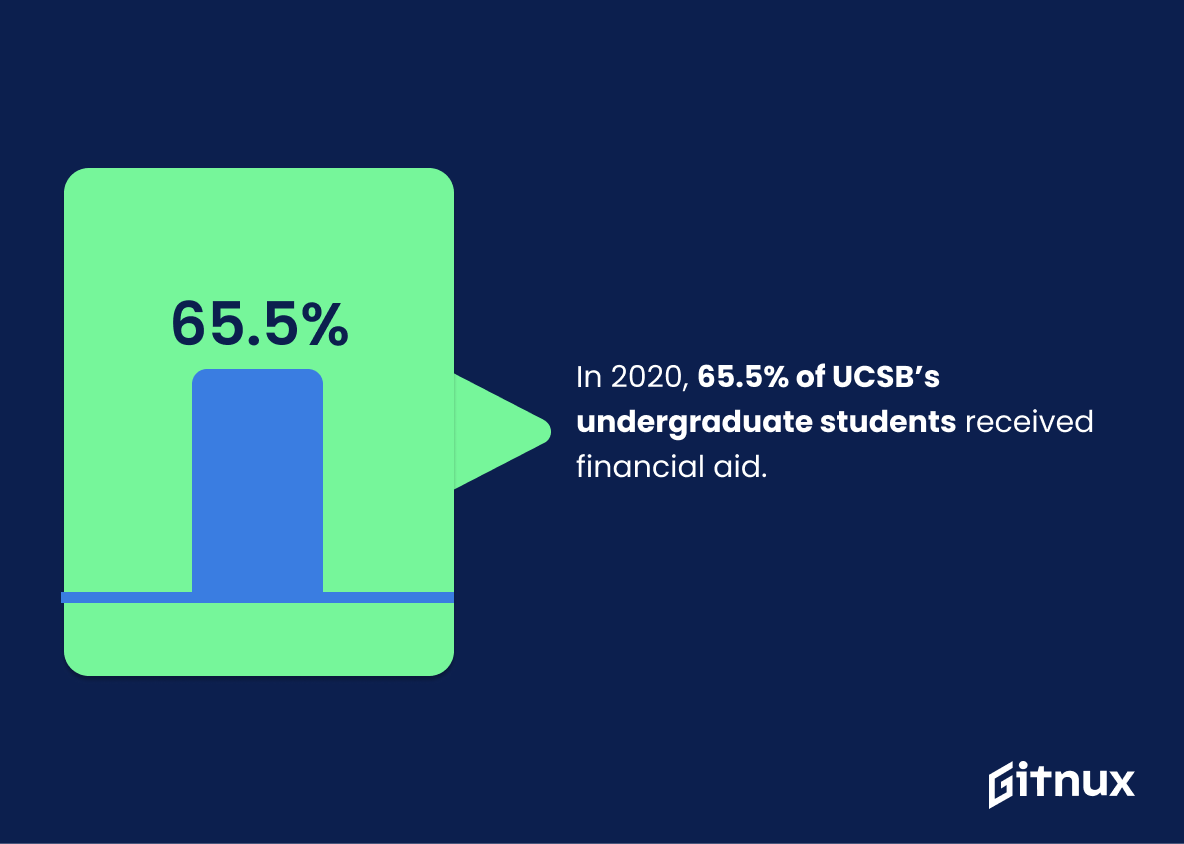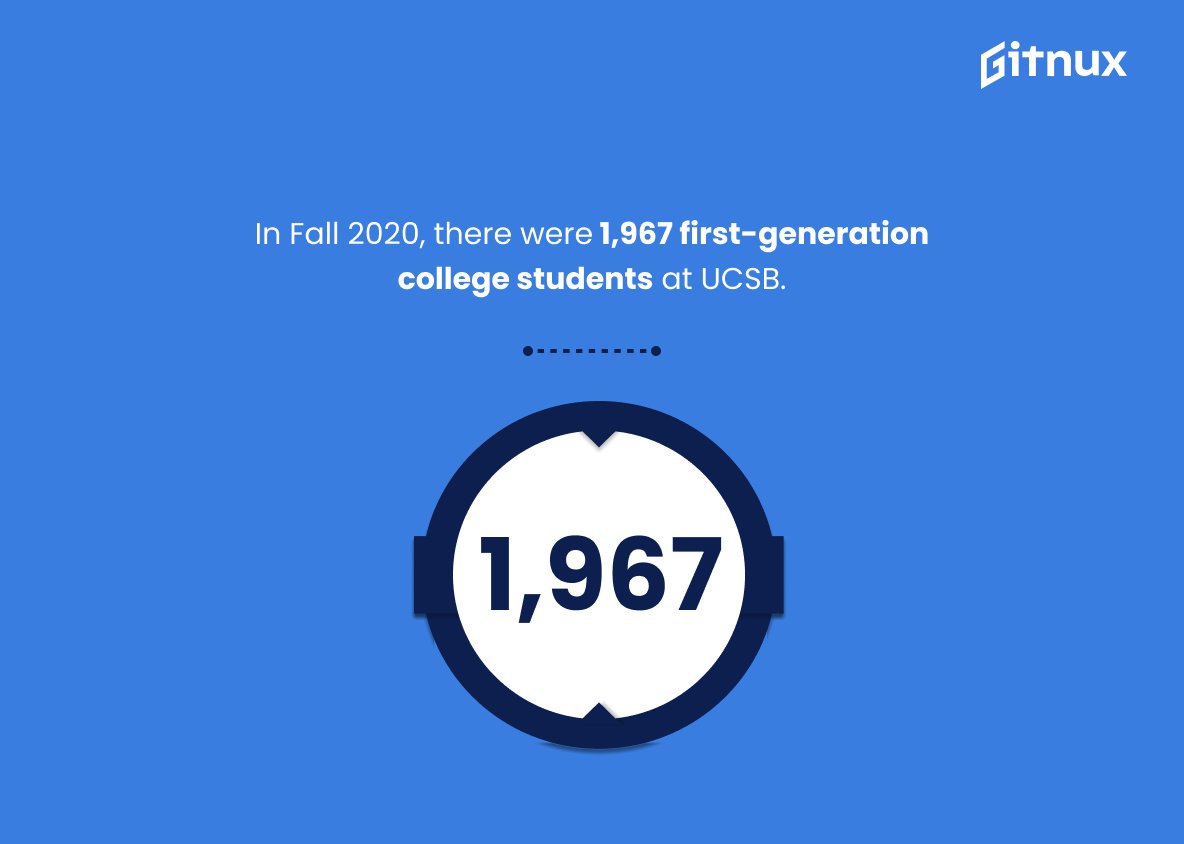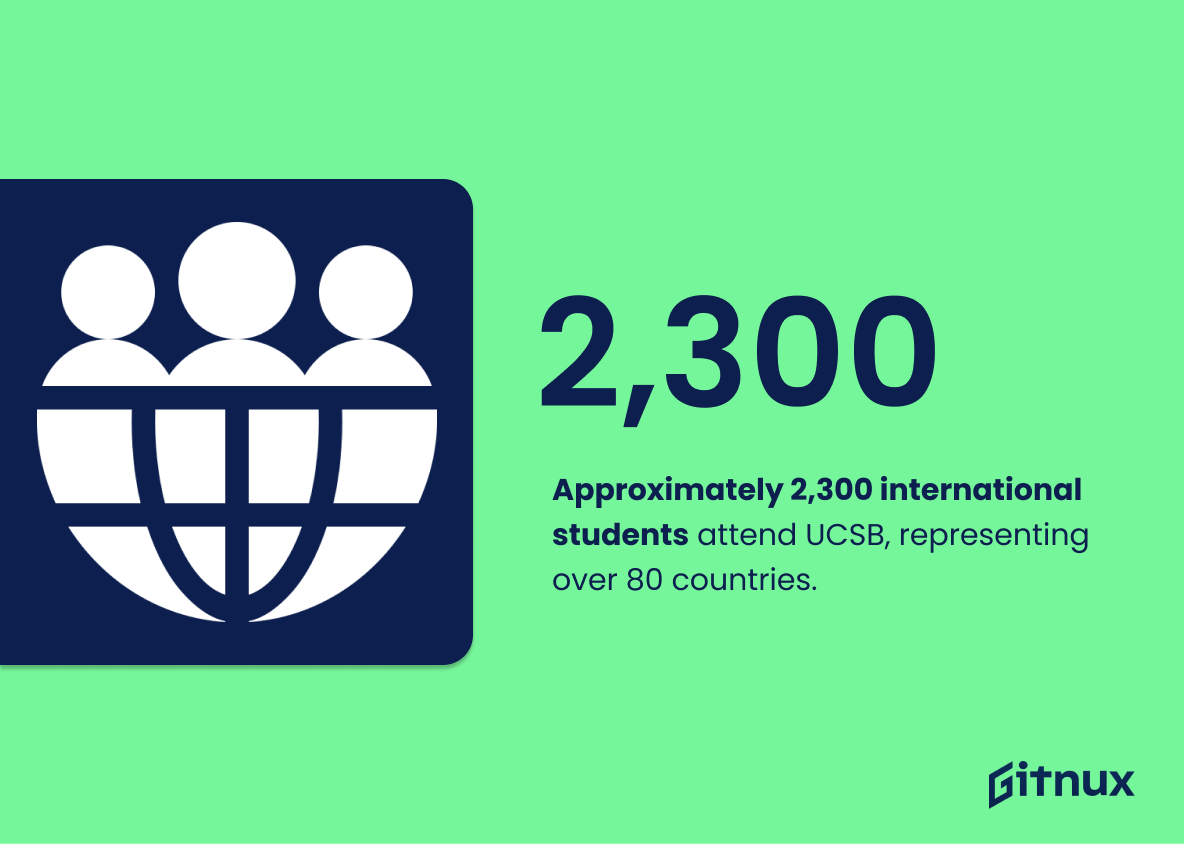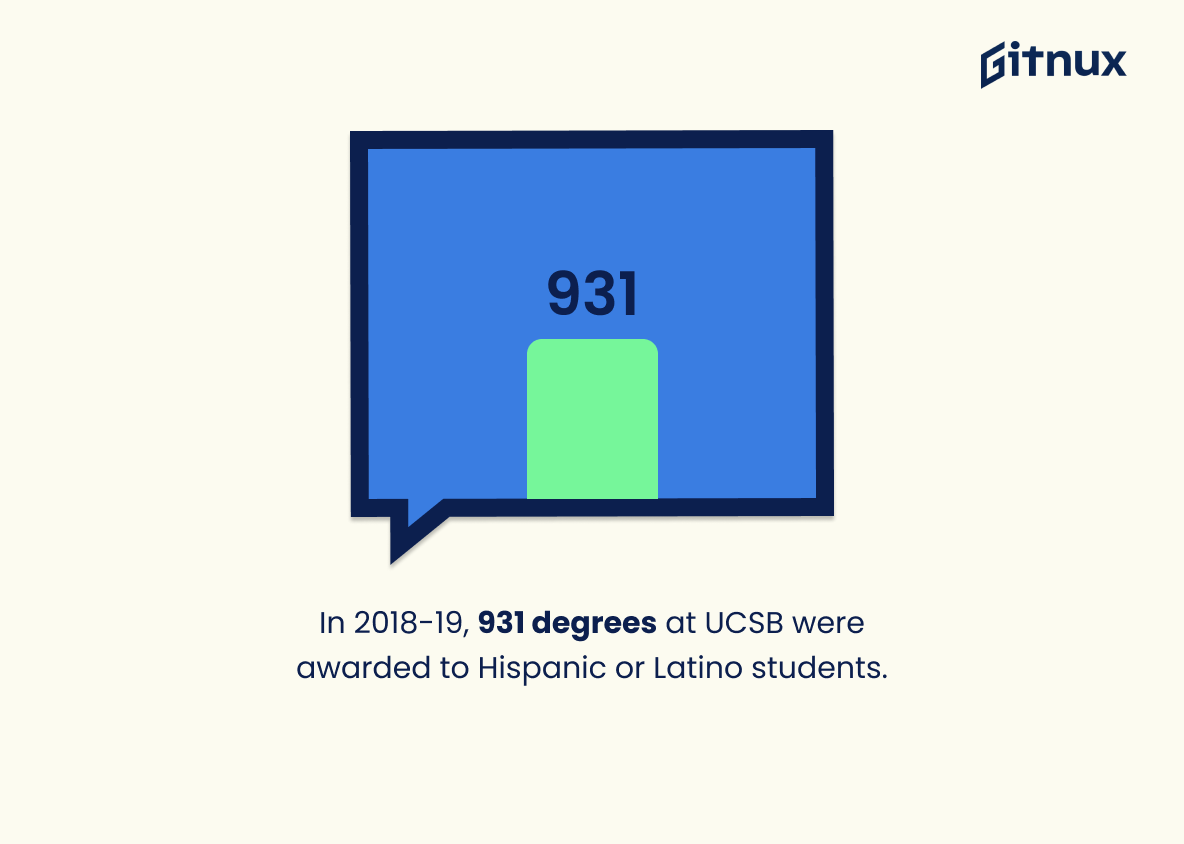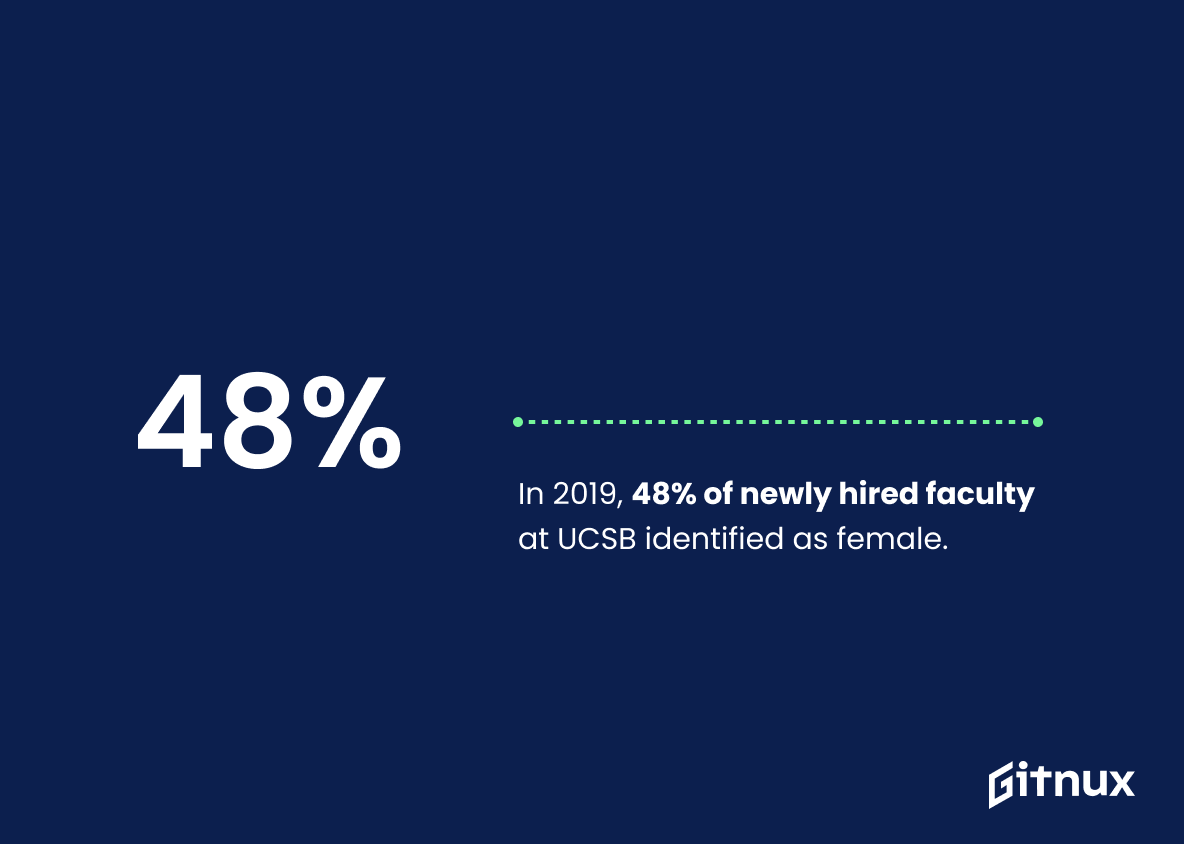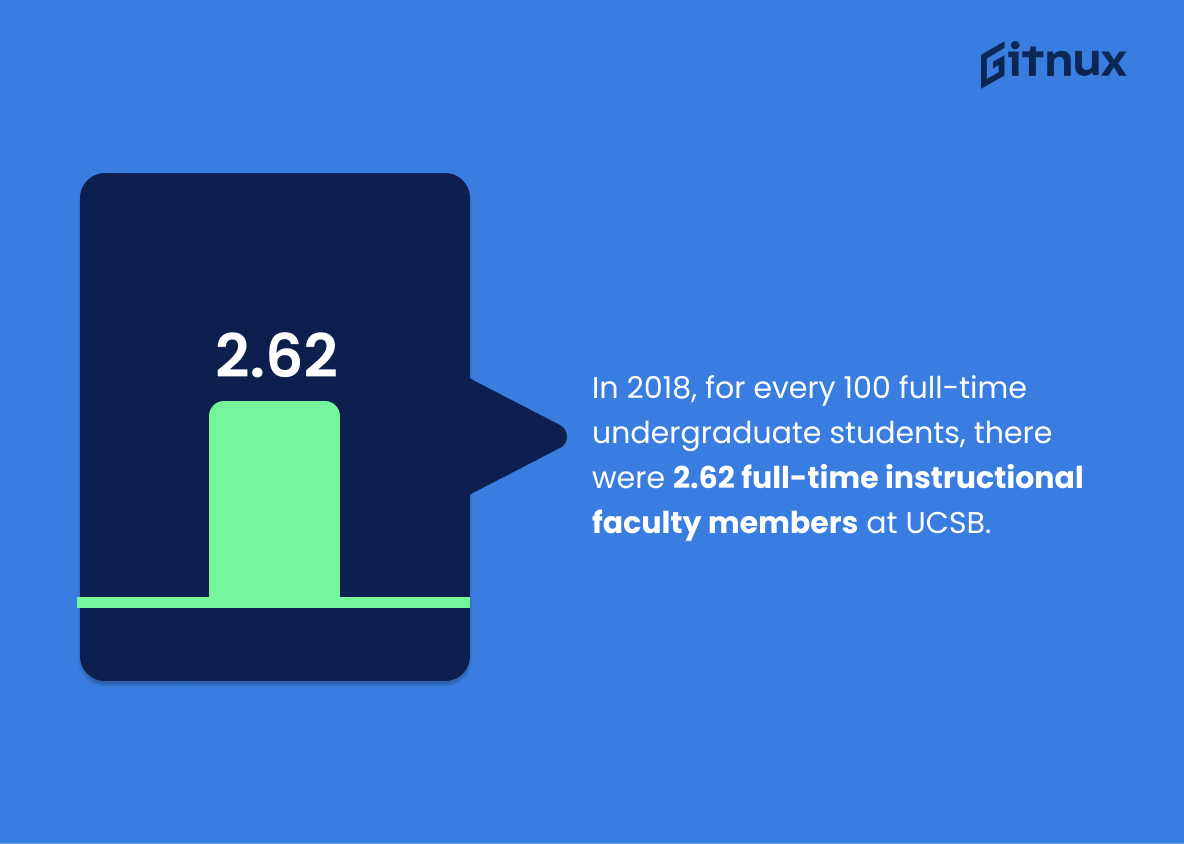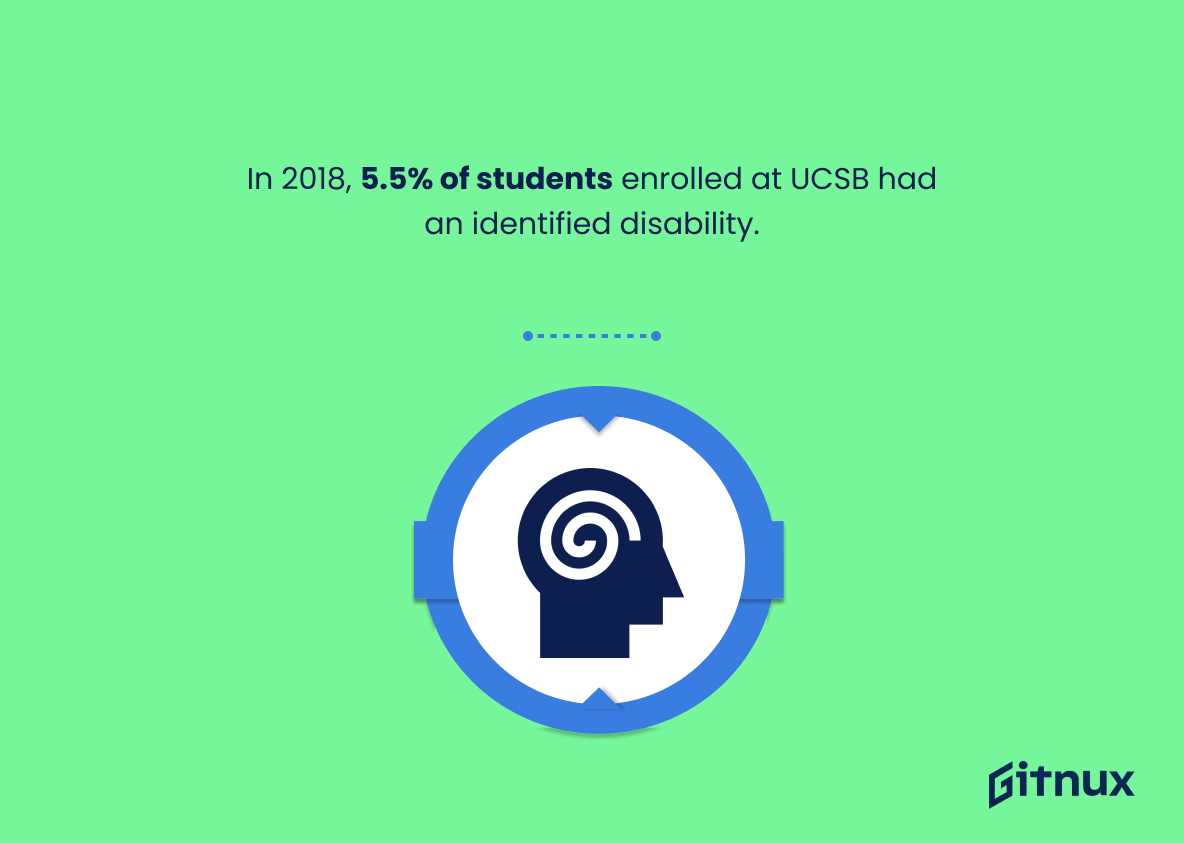The University of California, Santa Barbara (UCSB) is a diverse and inclusive institution that values the contributions of all its members. According to College Factual, UCSB ranks #30 in ethnic diversity nationwide with a student ethnic diversity composition of 0.72. In Fall 2020, 39.5% of students were White, 28% Hispanic/Latino, 16.7% Asian American or Pacific Islander (AAPI), 3% Black or African American (BAAM), and 12.9% other ethnicities enrolled at UCSB; 54.8 percent came from historically underrepresented groups while 26.4 percent were underrepresented minority students among incoming freshmen class for 2020-21 academic year alone. Additionally, 41 percent are male undergraduate students while 59 percent are female undergraduates; 4
Ucsb Diversity Statistics Overview
54.8% of first-year students at UCSB in Fall 2020 came from historically underrepresented groups.
This statistic is a testament to the commitment of UCSB to create an inclusive and diverse campus. It shows that the university is actively working to create an environment where students from all backgrounds can feel welcome and supported. This statistic is a powerful reminder that UCSB is dedicated to creating an equitable and diverse learning environment for all students.
UCSB has been ranked among the Top 10 Universities for Hispanic Students in 2020.
This statistic is a testament to UCSB’s commitment to providing a diverse and inclusive environment for Hispanic students. It speaks to the university’s dedication to creating an environment where all students can thrive and succeed. This recognition is a reflection of the hard work and dedication of the faculty, staff, and students at UCSB to create a campus that is welcoming and supportive of all students.
In 2020, 26.4% of UCSB’s incoming freshman class consisted of underrepresented minority students.
This statistic is a testament to UCSB’s commitment to fostering a diverse and inclusive campus environment. It demonstrates that the university is actively working to create a student body that reflects the diversity of the world around us. By having a higher percentage of underrepresented minority students in the incoming freshman class, UCSB is sending a message that it values and respects all students, regardless of their background. This statistic is an important indicator of the university’s dedication to creating a safe and welcoming environment for all.
41% of undergraduate students at UCSB are male, while 59% are female.
This statistic is a powerful indicator of the gender diversity at UCSB. It shows that the university is making strides towards creating a more equitable environment for all students, regardless of gender. This statistic is especially important in the context of a blog post about UCSB diversity statistics, as it provides a snapshot of the gender balance at the university and can be used to compare UCSB to other universities.
In 2020, 4.4% of international students attended UCSB.
This statistic is a testament to UCSB’s commitment to fostering a diverse and inclusive environment for international students. It shows that UCSB is actively working to create a campus that is welcoming to students from all backgrounds and cultures, and that it is succeeding in doing so.
In 2019, 32% of UCSB’s faculty were from underrepresented groups.
This statistic is a testament to UCSB’s commitment to fostering an inclusive and diverse faculty. It demonstrates that the university is actively working to create an environment where all faculty members, regardless of their background, can feel welcome and respected. This statistic is a positive sign that UCSB is making progress in its efforts to create a more equitable and diverse campus.
UCSB received a 2020 Higher Education Excellence in Diversity (HEED) Award, recognizing its commitment to diversity and inclusion.
The 2020 Higher Education Excellence in Diversity (HEED) Award bestowed upon UCSB is a testament to the university’s dedication to fostering an inclusive and diverse environment. This recognition is a powerful indicator of the university’s commitment to creating a campus culture that celebrates and embraces the unique backgrounds and perspectives of its students, faculty, and staff.
Among 337 tenure-track faculty hired between 2010 and 2019, 48% were women and 20.52% were underrepresented individuals at UCSB.
This statistic is a powerful indicator of the progress UCSB has made in promoting diversity among its faculty. It shows that the university has made significant strides in hiring more women and underrepresented individuals, which is a testament to their commitment to creating a more inclusive environment. This statistic is also important because it demonstrates that UCSB is taking steps to ensure that its faculty reflects the diversity of its student body and the wider community.
In 2020, 65.5% of UCSB’s undergraduate students received financial aid.
This statistic is a testament to the fact that UCSB is committed to providing financial aid to its undergraduate students, regardless of their background. It speaks to the university’s dedication to making higher education accessible to all, regardless of their financial situation. This statistic is a powerful reminder that UCSB is a place where everyone can find a place to call home.
In Fall 2020, there were 1,967 first-generation college students at UCSB.
This statistic is a powerful reminder of the importance of UCSB’s commitment to providing educational opportunities to first-generation college students. It speaks to the university’s dedication to creating an inclusive and diverse campus environment, where all students can thrive. It also highlights the progress that has been made in recent years to ensure that first-generation college students have access to the same resources and opportunities as their peers.
Approximately 2,300 international students attend UCSB, representing over 80 countries.
This statistic speaks volumes about the diversity of UCSB’s student body. It shows that UCSB is a truly global university, with students from all over the world coming together to learn and grow. This diversity of perspectives and experiences can only enrich the educational experience of all students, and is a testament to UCSB’s commitment to creating a welcoming and inclusive environment.
In 2018-19, 931 degrees at UCSB were awarded to Hispanic or Latino students.
This statistic is a testament to the success of UCSB in creating an inclusive and diverse environment for its students. It shows that the university is actively working to ensure that all students, regardless of their ethnicity, have access to the same educational opportunities. This statistic is a powerful reminder that UCSB is committed to providing a safe and welcoming environment for all students, and that it is making strides towards creating a more equitable campus.
In 2019, 48% of newly hired faculty at UCSB identified as female.
This statistic is indicative of the progress UCSB has made in promoting gender diversity among its faculty. It shows that the university is taking steps to ensure that its faculty is representative of the population it serves, and that it is committed to creating an inclusive and equitable learning environment. This is an important step in creating a campus culture that values and celebrates diversity.
In 2018, for every 100 full-time undergraduate students, there were 2.62 full-time instructional faculty members at UCSB.
This statistic is indicative of the level of faculty support available to undergraduate students at UCSB. With a ratio of 2.62 full-time instructional faculty members for every 100 full-time undergraduate students, it is clear that UCSB is providing a high level of support to its students. This is especially important in the context of diversity, as it ensures that all students have access to the resources they need to succeed.
In 2019, 14.8% of tenure-track faculty at UCSB identified as Asian American, 8.1% identified as Hispanic/Latino, 1.62% identified as African American, and 0.68% identified as Native American or Pacific Islander.
This statistic is a powerful reminder of the importance of diversity in higher education. It highlights the fact that UCSB is making progress in creating a more inclusive and equitable environment for faculty, students, and staff. By having a diverse faculty, UCSB is able to provide a more comprehensive education to its students, as well as create a more welcoming and supportive environment for all members of the university community. This statistic is a testament to the university’s commitment to creating a more diverse and equitable campus.
In 2018, 5.5% of students enrolled at UCSB had an identified disability.
This statistic is a testament to UCSB’s commitment to providing an inclusive and accessible environment for all students, regardless of disability. It highlights the university’s dedication to creating a campus that is open and welcoming to students of all backgrounds and abilities. By recognizing the importance of accommodating students with disabilities, UCSB is demonstrating its commitment to fostering a diverse and inclusive community.
Conclusion
UCSB is a diverse and inclusive university that strives to create an equitable learning environment for all students. The statistics show that UCSB ranks #30 in ethnic diversity nationwide, with 39.5% White, 28% Hispanic, 16.7% Asian, 3% Black or African American and 12.9 % other ethnicities making up the student body population in Fall 2020; 54.8 % of first-year students at UCSB came from historically underrepresented groups; 26.4 % of incoming freshman class consisted of underrepresented minority students; 41 % undergraduate students are male while 59 % are female; 4 .4 percent international student enrollment rate was reported in 2020 ; 32 percent faculty were from underrepresented groups as per 2019 data ; 48 percent women and 20 .52 percent individuals belonging to under represented group among 337 tenure track faculty hired between 2010 -2019 , 65 .5percent undergraduates received financial aid , 1 967 first generation college student enrolled in fall 2020 representing over 80 countries 2 300 internationals attended UCSB 7 percentage LGBTQ+ identified faculty 14 8percent Asian Americans 8 1percent Hispanics / Latinos 1 62African Americans 0 68 Native American Pacific Islanders 5 5students having disability 31 1Pell Grant recipients These figures demonstrate how committed UC Santa Barbara is towards creating a safe space where everyone can thrive regardless of their background or identity
References
0. – https://www.news.ucsb.edu
1. – https://www.dsp.sa.ucsb.edu
2. – https://www.ap.ucsb.edu
3. – https://www.nces.ed.gov
4. – https://www.universityofcalifornia.edu
5. – https://www.oiss.ucsb.edu
6. – https://www.ucsb.edu
7. – https://www.collegefactual.com
